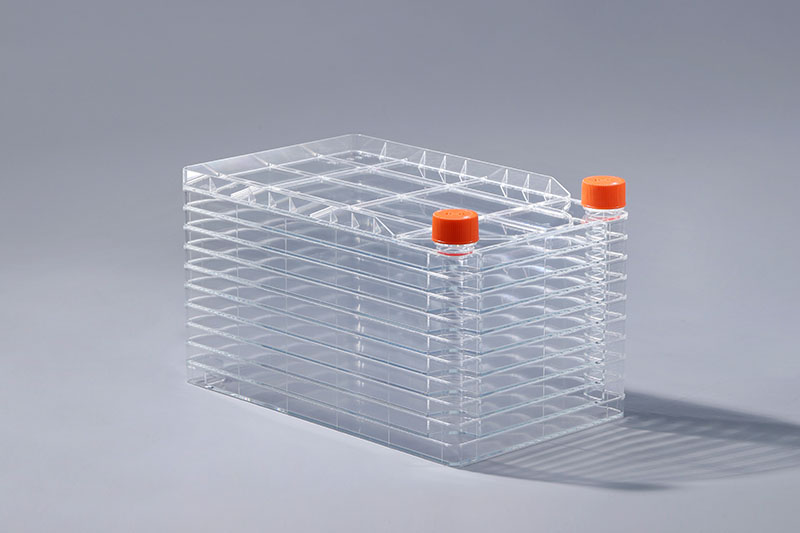Med den breda tillämpningen av cellkultur inom biovetenskap, används Det ideala osmotiska trycket varierar med celltyp och ras. Det osmotiska trycket för human plasma är 290 mmol/L, vilket anses vara det ideala osmotiska trycket för att odla mänskliga celler in vitro. Det osmotiska trycket hos däggdjursceller är i allmänhet 290 till 300 mmol/L. Mänskliga embryonala lungfibroblaster är 250-325 mmol/L, och möss är cirka 310 mmol/L. I praktiska tillämpningar är det osmotiska trycket på 260-320 mmol/L lämpligt för de flesta celler. Dessutom är lämplig temperatur, gasmiljö och pH-värde, icke-toxicitet och sterilitet de grundläggande förutsättningarna för cellodling. i stor utsträckning som en cellkultur som konsumeras inom områdena vaccinproduktion och -beredning, monoklonala antikroppar, stamceller och somatisk cellterapi. Celltillväxt har strikta krav på miljön och lämpligt osmotiskt tryck är grunden för att celler ska kunna bibehålla ett bra tillväxttillstånd. Därför är korrekt osmotiskt tryck en av de viktiga förutsättningarna för att odla celler i cellfabriker. Upprätthållandet av osmotiskt tryck hos däggdjurs- och andra djurvävnadsceller in vitro är huvudsakligen relaterat till natriumklorid, men förhållandet mellan osmotiskt tryck hos andra dielektrika kan inte ignoreras. Det osmotiska trycket är proportionellt mot antalet molekyler och joner i det lösta ämnet i lösningsmedlets volymenhet, och jonbalansen i odlingsmediet styrs enligt en viss proportion. Att upprätthålla ett normalt osmotiskt tryck är inte bara för att upprätthålla cellspänning, utan spelar också en viktig roll för att reglera cellmetabolism. Eftersom extracellulär jontransport och jonkoncentration förändrar transporten av andra näringsämnen, påverkar det direkt det grundläggande syntessystemet av celler.
Cells in hypertonic or hypotonic solutions immediately shrink, swell, and rupture. Therefore, proper osmotic pressure is one of the important conditions for culturing cells in cell factories. The maintenance of osmotic pressure of mammalian and other animal tissue cells in vitro is mainly related to sodium chloride, but the relationship of osmotic pressure of other dielectrics cannot be ignored. The osmotic pressure is proportional to the number of molecules and ions of the solute in the unit volume of the solvent, and the ion balance in the culture medium is controlled according to a certain proportion. Maintaining a normal osmotic pressure is not only to maintain cell tension, but also plays an important role in regulating cell metabolism. Because extracellular ion transport and ion concentration alter the transport of other nutrients, it directly affects the basic synthesis system of cells.
The ideal osmotic pressure varies with the type and race of cells. The osmotic pressure of human plasma is 290 mmol/L, which is considered to be the ideal osmotic pressure for culturing human cells in vitro. The osmotic pressure of mammalian cells is generally 290 to 300 mmol/L. Human embryonic lung fibroblasts are 250-325 mmol/L, and mice are about 310 mmol/L. In practical applications, the osmotic pressure of 260-320 mmol/L is suitable for most cells.
The importance of appropriate osmotic pressure when culturing cells in cell factories is beyond doubt. In addition, appropriate temperature, gas environment and pH value, non-toxicity and sterility are the basic conditions for cell culture.
The FAI climbed 5.9 percent year-on-year in the first 11 months of 2018, quickening from the 5.7-percent growth in Jan-Oct, the National Bureau of Statistics (NBS) said Friday in an online statement.
The key indicator of investment, dubbed a major growth driver, hit the bottom in August and has since started to rebound steadily.
In the face of emerging economic challenges home and abroad, China has stepped up efforts to stabilize investment, in particular rolling out measures to motivate private investors and channel funds into infrastructure.
Friday's data showed private investment, accounting for more than 60 percent of the total FAI, expanded by a brisk 8.7 percent.
NBS spokesperson Mao Shengyong said funds into weak economic links registered rapid increases as investment in environmental protection and agriculture jumped 42 percent and 12.5 percent respectively, much faster than the average.
In breakdown, investment in high-tech and equipment manufacturing remained vigorous with 16.1-percent and 11.6-percent increases respectively in the first 11 months. Infrastructure investment gained 3.7 percent, staying flat. Investment in property development rose 9.7 percent, also unchanged.
 English
English



















































